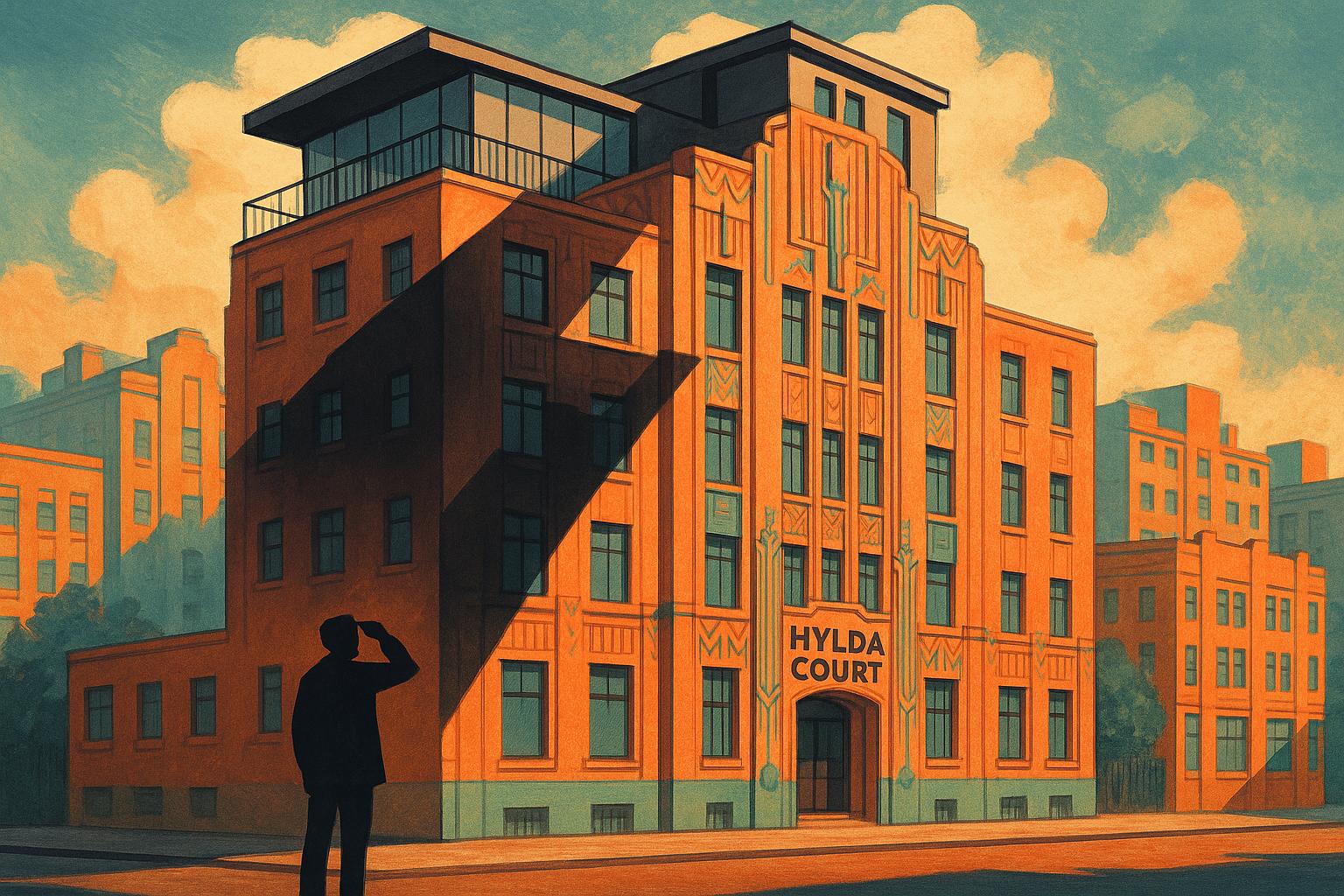Hylda Court, an iconic 1930s Art Deco block of flats located in St Albans Road near Parliament Hill Fields, faces ongoing controversy over proposed plans to add a rooftop penthouse. Tenants and heritage advocates are strongly opposing the development, arguing that it would irreparably damage the building’s architectural integrity and harm the community’s quality of life.
Designed by British Modernist architect Clifford Culpin, Hylda Court is celebrated for its distinctive Ocean-liner style, a hallmark of the era’s Art Deco movement. The building attracted the praise of architectural historian Sir Nikolaus Pevsner, who described it as a “period piece” and noted its unparalleled style in the neighbourhood. While Hylda Court is not formally listed for heritage protection, it is recognised as a “building of note” in the local conservation plan, highlighting its cultural importance.
The current proposals, led by owners Bankway Properties, seek to add a sixth storey of penthouse flats and build a terrace of new homes at the rear of the site by demolishing garages and a former caretaker’s house. However, these plans have provoked alarm among residents. They contend that raising the building’s height would disrupt its architectural balance and lead to overcrowding, compromising not only the historic character of Hylda Court but also the living conditions of its occupants.
A tenant expressed concerns that the proposal would fail to meet Camden’s pressing housing needs, pointing out that the plans focus solely on luxury flats without any provision for affordable or family-sized homes, which are in acute demand in the borough. Furthermore, residents warn that construction and the new units could reduce natural light, increase noise levels from rooftop and ground-level air source heat pumps, and create privacy issues due to heightened overlooking.
Heritage groups have joined the opposition, with the 20th Century Society formally calling for Hylda Court to be granted listed status to safeguard it against modifications that could erode its architectural legacy. The Society’s intervention underscores the broader concern that such developments threaten the preservation of unique interwar architectural gems at a time when protecting heritage is crucial.
Bankway Properties previously withdrew an earlier application last November, apparently due to the need for more comprehensive ecological surveys, including a bat survey, which they have now completed. The developers argue that their goal is to make positive use of the brownfield site, enhance the conservation area overall, and contribute additional housing in a sustainable location. They also claim that the introduction of a sedum green roof would bring environmental benefits, although critics dismiss these as negligible against the scale of the harm inflicted on both heritage and community wellbeing.
The debate has captured the attention not only of Hylda Court residents but also nearby communities and users of Hampstead Heath, with objectors urging broader public involvement to help preserve the character of this historic area. Camden Council, which holds responsibility for planning decisions, provides channels for residents to express their views on such developments, ensuring community voices can influence the outcome.
As the issue unfolds, the tension between the demand for new housing and the need to protect architectural heritage and residents’ wellbeing remains at the heart of the controversy. The future of Hylda Court’s rooftop—and its status as a prized example of 1930s Art Deco design—hangs in the balance as local authorities weigh competing interests.
📌 Reference Map:
- Paragraph 1 – [1], [4]
- Paragraph 2 – [1], [2], [3]
- Paragraph 3 – [1], [4]
- Paragraph 4 – [1]
- Paragraph 5 – [2], [3]
- Paragraph 6 – [1]
- Paragraph 7 – [1], [5], [7]
- Paragraph 8 – [1], [7]
Source: Noah Wire Services
